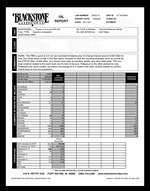As the title says I have a 2015 Tacoma with a 4 cylinder. I ran Pennzoil Platinum 0W20 and a mobile one filter. I ran it just over 4600 miles, just shy of the 5000 mi recommended interval.
Looks like they were concerned about the iron and potassium, in the flash point is just under the spec.
Any thoughts on this other than what they posted?
I've had a recurring issue, on Cold starts below. Freezing, The oil light stays on for an extended period of time.
Looks like they were concerned about the iron and potassium, in the flash point is just under the spec.
Any thoughts on this other than what they posted?
I've had a recurring issue, on Cold starts below. Freezing, The oil light stays on for an extended period of time.

